Picture to show task:

First I am sorry, for my bad to for expressing my mind.
I have such a task, I don't need that you do it for me.
Vehicle is parent class for Sedan (Cause Sedan class is String type).
- How to extend or implement Vehicle class with universal class?
- I forgot to ask my teacher, but maybe you will know, what means striped pointer to Owner class, and what is that:
has a?
P.S. If you need code that I have written already, I will show you.
So this is my parent Vehicle class:
public class Vehicle {
private int vehicleNumber;
protected int fuelTankSize;
protected int maxSpeed;
protected Owner owner;
//1
public Vehicle(int vehicleNumber){
this.vehicleNumber = vehicleNumber;
}
//2
public Vehicle(int vehicleNumber, int fuelTankSize) {
this.vehicleNumber = vehicleNumber;
this.fuelTankSize = fuelTankSize;
}
//3
public Vehicle(int vehicleNumber, int fuelTankSize, int maxSpeed) {
this.vehicleNumber = vehicleNumber;
this.fuelTankSize = fuelTankSize;
this.maxSpeed = maxSpeed;
}
//4
public Vehicle(int vehicleNumber, int fuelTankSize, int maxSpeed, Owner owner) {
this.vehicleNumber = vehicleNumber;
this.fuelTankSize = fuelTankSize;
this.maxSpeed = maxSpeed;
this.owner = owner;
}
//1
public int getMaxSpeed() {
return maxSpeed;
}
public void setMaxSpeed (int maxSpeed){
this.maxSpeed = maxSpeed;
}
//2
protected int getFuelTankSize(){
return fuelTankSize;
}
protected void setFuelTankSize (int fuelTankSize){
this.fuelTankSize = fuelTankSize;
}
//3
public Owner getOwner(){
return owner;
}
public void setOwner (Owner owner){
this.owner = owner;
}
}
child Sedan with:
public class Sedan extends Vehicle {
private String registrationIndex;{
}
public Sedan (int vehicleNumber, int fuelTankSize, int maxSpeed, String registrationIndex, Owner owner) {
super(vehicleNumber, fuelTankSize, maxSpeed, owner);
this.setRegistrationIndex (registrationIndex);
}
public String getRegistrationIndex (){
return registrationIndex;
}
public void setRegistrationIndex (String registrationIndex) {
this.registrationIndex = registrationIndex;
}
}
second Universal child without an error:
public class Universal extends Vehicle {
private int trunkSize;
public Universal (int vehicleNumber, int fuelTankSize, int maxSpeed, int trunkSize, Owner owner) {
super(vehicleNumber, fuelTankSize, maxSpeed, owner);
this.setTrunkSize (trunkSize);
}
public int getTrunkSize() {
return trunkSize;
}
public void setTrunkSize(int trunkSize) {
this.trunkSize = trunkSize;
}
public void printDescription() {
super.printDescription();
System.out.println("Universalo bagažinės tūris: " + getTrunkSize() + "l.");
}
}
and some misterious (to me) Owner class:
public class Owner {
public String firstName;
public String lastName;
public Owner (String firstName){
this.firstName = firstName;
}
public Owner (String firstName, String lastName){
this.firstName = firstName;
this.lastName = lastName;
}
}
added VechileTest for testing:
public class VehicleTest {
public static void main(String[] args) {
Vehicle vehicleInf = new Vehicle (1, 45, 260);
Universal universalInf = new Universal(2, 50, 220, 70);
Sedan sedanInf = new Sedan (3, 40, 180, "AVA 123");
vehicleInf.printDescription();
universalInf.printDescription();
sedanInf.printDescription();
}
}